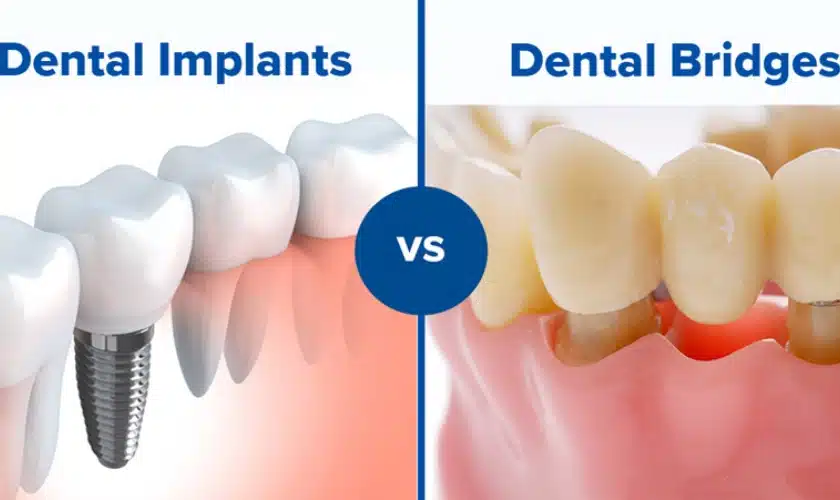Indicators on Dental Sense You Need To Know
Indicators on Dental Sense You Need To Know
Blog Article
Not known Details About Dental Sense
Table of ContentsDental Sense - Truths10 Easy Facts About Dental Sense DescribedDental Sense Can Be Fun For EveryoneWhat Does Dental Sense Do?
are medical devices surgically dental implanted into the jaw to recover an individual's capacity to chew or their appearance. They supply assistance for synthetic (phony) teeth, such as crowns, bridges, or dentures. When a tooth is lost because of injury or illness, an individual can experience issues such as quick bone loss, malfunctioning speech, or modifications to chewing patterns that cause pain.Dental dental implant systems consist of a dental implant body and dental implant joint and might additionally consist of a joint addiction screw. Front tooth filling. The oral implant body is operatively placed in the jawbone instead of the tooth's root. The oral implant joint is normally affixed to the implant body by the abutment fixation screw and prolongs via periodontals right into the mouth to sustain the connected synthetic teeth
(https://dentalsense1.bandcamp.com/album/dental-sense)Structure of The Oral Implant System choosing oral implants, speak to your dental provider regarding the potential advantages and threats, and whether you are a candidate for the procedure. Points to think about: Your general wellness is an important consider establishing whether you are a great prospect for dental implants, for how long it will certainly require to heal, and just how long the dental implant may remain in location.
Smoking cigarettes may impact the recovery process and lower the long-lasting success of the dental implant. The healing procedure for the dental implant body may take several months or longer, throughout which time you normally have a short-lived abutment instead of the tooth. the oral implant treatment: Thoroughly comply with the dental health instructions offered to you by your dental provider.
A Biased View of Dental Sense
Implant failing can cause the need for another operation to repair or change the dental implant system. Recovers the capability to chew Recovers aesthetic appearance Assists keep the jawbone from diminishing as a result of bone loss Protects the health and wellness of the surrounding bone and gum tissues Assists maintain surrounding (neighboring) teeth secure Improves top quality of life Damage to surrounding all-natural teeth during dental implant placement Injury to the surrounding cells during surgical procedure, such as sinus opening Injury throughout surgical procedure (for instance, fracture of bordering jawbone) Poor feature, such as really feeling like the teeth do not bite together generally A feeling that the tooth hangs or twisting in area arising from a joint screw loosening Implant body failure (looseness of the dental implant body) due to systemic infection, which may be most likely in patients with unchecked diabetes because of regional infection in bone and gum tissues sustaining the implant body because of delayed healing, which might be most likely in individuals who smoke Trouble cleansing the gum tissues around the implant, causing inadequate dental hygiene Without treatment periodontal illness Post-surgical pins and needles because of nerve impingement or damages Constantly notify health and wellness treatment service providers and imaging specialists that you have dental implants prior to any type of magnetic resonance imaging (MRI) or x-ray treatments.
FDA is not aware of any type of unfavorable occasions reported for MRI or x-ray procedures with dental implants. Oral implants systems are usually made from products that adhere to international consensus standards of the International Organization for Standardization (ISO) or ASTM International. These criteria have information of what makes a safe material.

An oral implant is a structure that changes a missing tooth. With screw-like devices, the doctor inserts a dental implant into the jawbone, and it acts as a support for a man-made tooth, called a crown. A tool called a joint attaches the synthetic tooth to the dental implant. The crown is tailor-made to fit the individual's mouth and match the shade of their teeth.
Everything about Dental Sense
Some people are not eligible for oral implant surgery. It is for oral surgeons to run on people with: intense illnessuncontrollable metabolic diseasebone or soft tissue disease or infectionIf these problems are Check This Out fixed, a person can have the surgical procedure. In, dental doctors avoid operating individuals with: If individuals with any of the above undertake oral implant surgical procedure, there is a higher threat of the implant stopping working.

Dental implant surgical procedure is a personalized process. Give you time to heal. Attach the post and final crown, bridge or denture.
Next, your doctor will meticulously put the dental implant into your jaw. Your specialist will rearrange your periodontals and shut the cut with stitches. If your dental implant is near the front of your mouth, your dental expert will make a temporary tooth for you to put on till you recover. In this way, you will not have a void in your smile while you recoup.
The Of Dental Sense
Throughout the recovery phase, your jawbone ought to fuse to the oral implant. This process can take anywhere from 3 to 9 months.
Once your dental implant heals, your dental expert can attach the abutment (little port message) and your final repair (crown, bridge or denture). This normally takes regarding one hour to complete and might require a second small surgical procedure. You should not feel any type of pain throughout your oral implant treatment because your provider will certainly utilize drug to numb your periodontals.
Report this page